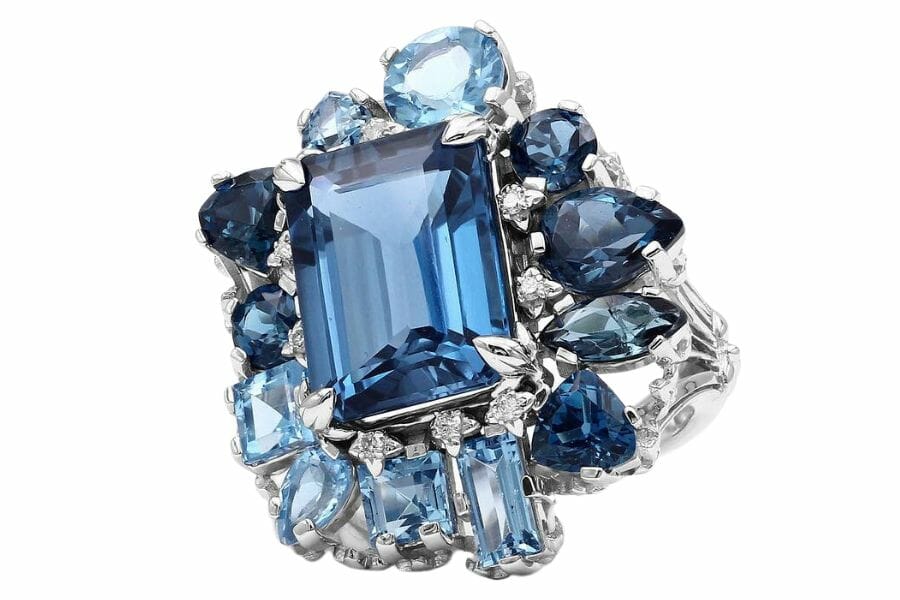Aquamarine and blue topaz, with their captivating shades of blue, can be hard to tell apart. We’ll delve into the core differences and similarities between aquamarine and blue topaz. We’re talking color, luster, hardness, and even UV light reactions.
It can be tough to distinguish between aquamarine vs blue topaz. With the right knowledge, however, it’s easier than you might think.
We’ll look at everything from color variations and luster to hardness and their response under UV light. For those of you who love a good mystery, did you know that a gem’s streak can reveal its identity? We’ll unveil this secret and more!
And for the buyers among us, we’ll discuss why aquamarine often carries a heftier price tag. By the end, you’ll have the know-how to identify these gems like an expert.
Aquamarine vs Blue Topaz – The Major Differences
It can be really easy to mix up aquamarine and blue topaz because of their blue hues. Let’s find out what unique features set these two sparkling gems apart.
Colors – Aquamarine tends to have a greenish tinge
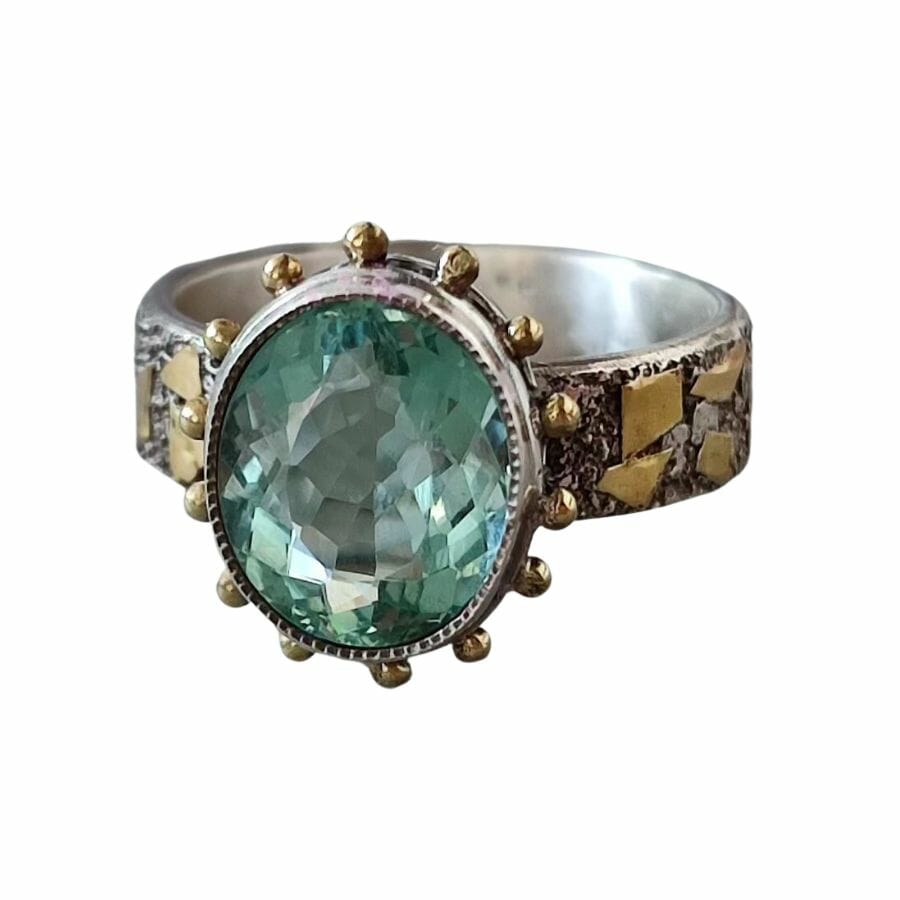
When you look at aquamarine, it’ll remind you of the sea. Its name even comes from the Latin words for “water” and “sea.” This gem can show colors from blue to green-blue, like gazing into a tropical ocean.
The blue in aquamarine is a pale, subtle color, often a light sky blue. Sometimes, it leans towards a greenish-blue, like the colors you’d find in a shallow, sunny bay. It can also sometimes come in a deeper, richer blue.
On the other hand, blue topaz is like looking up into a deep, clear sky. It can flaunt a wide range of blues. Some blue topaz stones can be a light, sky-blue, almost as light as aquamarine. Others are a deeper, more intense blue.
There are even some that have a teal color – a mix of blue and green that’s much darker than aquamarine.
The key difference in color between these two stones is the intensity and range of blues. Aquamarine’s color is light and subtle, sticking close to sea-like tones. Blue topaz can show off lighter blues like the sky, or deep, intense blues, even teal.
Crystal structure – Blue topaz’s crystals look like slanted box
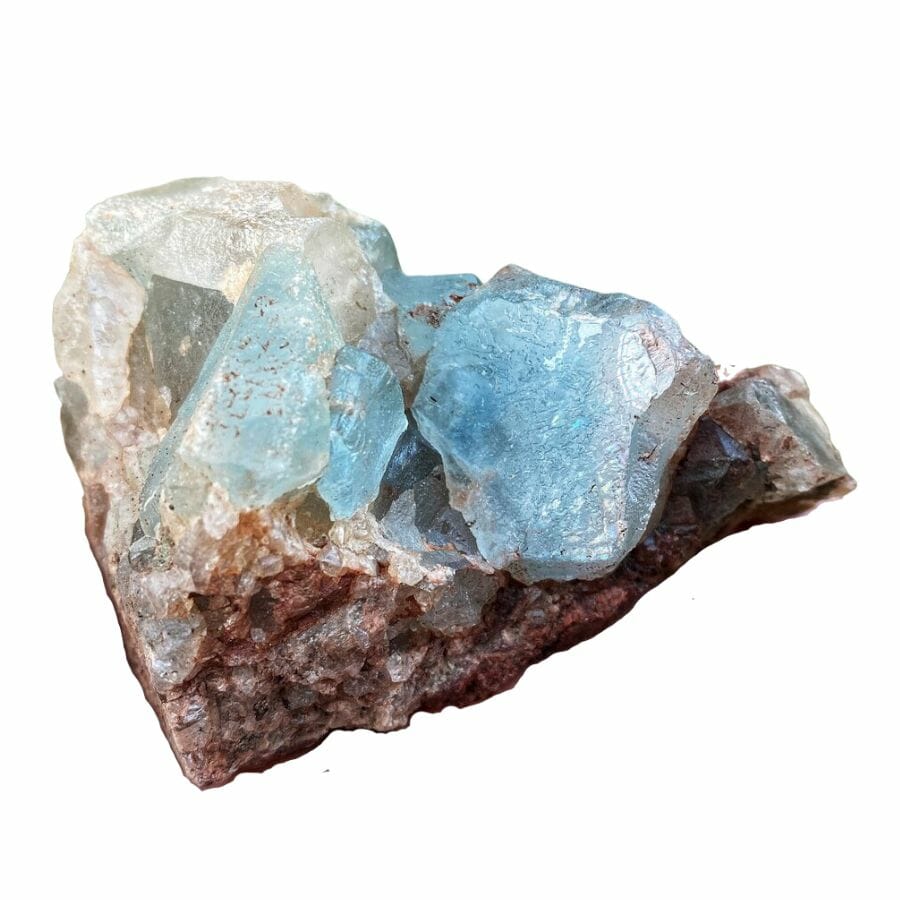
If we could shrink ourselves down and step into an aquamarine or a blue topaz, we’d find ourselves in totally different worlds. That’s because these two gems have different crystal structures.
A crystal structure is like the blueprint for how the gem grows. It determines the shape of the crystal and how the atoms are arranged inside.
Aquamarine has a hexagonal crystal structure. Picture a honeycomb, with its perfectly ordered six-sided cells. This is a bit like what the inside of an aquamarine looks like, at least in terms of the arrangement of its atoms.
The gem forms long, six-sided prisms with well-formed faces. Sometimes, you might even see double-terminated crystals, which means they have points at both ends.
Now, imagine stepping into a blue topaz. The inside of this gem has an orthorhombic crystal structure. Instead of the hexagonal order of aquamarine, this one has a rectangular layout.
Think about a box, with three unequal sides. This leads to topaz forming short, stout crystals, usually with striations running the length of the crystal.
Cleavage – Aquamarine doesn’t break easily
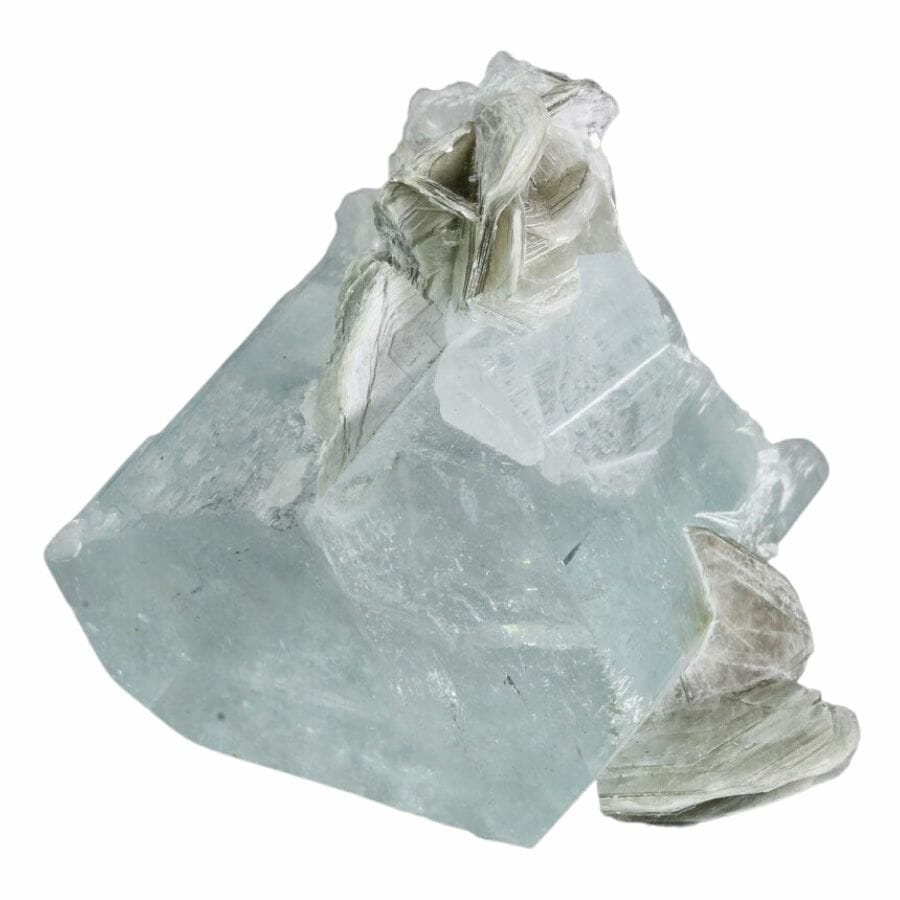
In geology, cleavage describes the way a mineral breaks. Some minerals like to easily break into smooth, flat planes, while others don’t.
Aquamarine has what’s called imperfect cleavage. This means it’s pretty tough. If you tried to split it, it wouldn’t break cleanly or easily.
This imperfect cleavage helps make aquamarine a good choice for different types of jewelry because it’s less likely to chip or split.
Now, let’s talk about blue topaz. This gem has perfect basal cleavage. This means it can split perfectly along one plane.
Jewelers have to take care with blue topaz because it can split when they’re cutting it or setting it into jewelry. If they aren’t careful, they might end up with two pieces instead of one beautiful gem!
Chemical composition – Blue topaz contains fluorine and aluminum
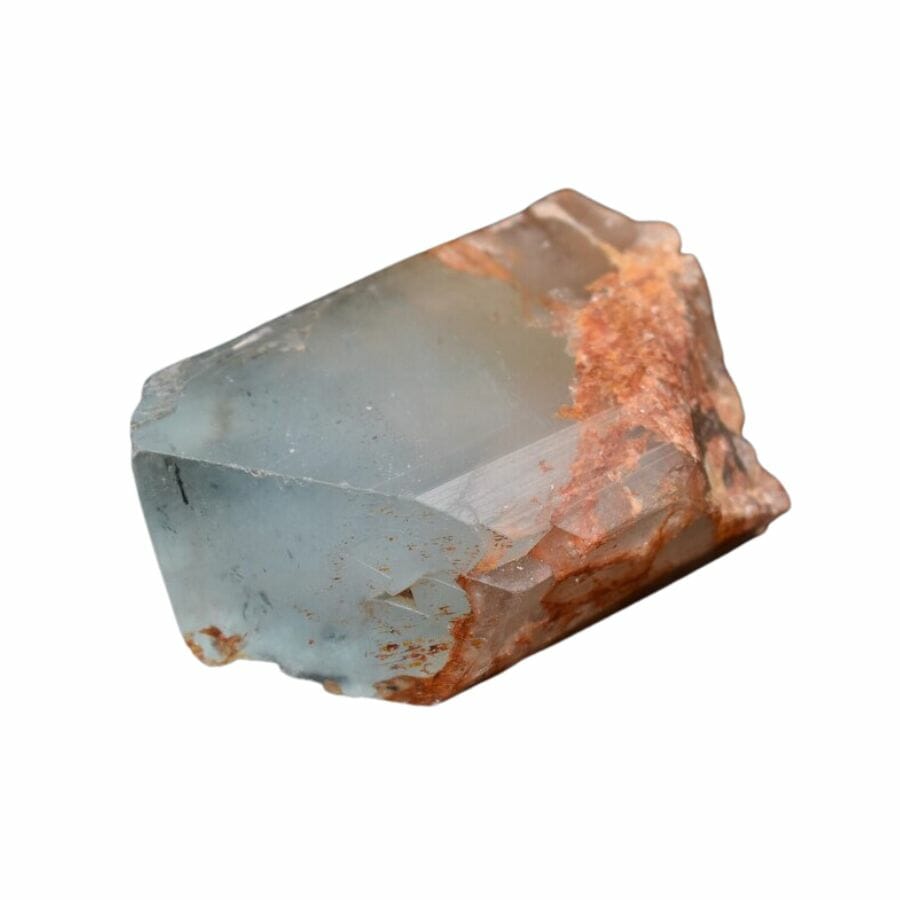
Aquamarine and blue topaz may look somewhat similar to the naked eye. Both gems are also silicates, which are super common minerals found in Earth’s crust. Their basic building blocks are silicon and oxygen, but they can also contain other elements.
But if we dig a little deeper and look at what they’re made of, we’ll find that aquamarine and blue topaz are pretty different. It’s like baking two different types of blue cookies, but with totally different recipes.
Aquamarine is a kind of beryl, which is a mineral made of beryllium aluminum silicate. Think of beryl as the basic dough for our cookie, with aquamarine as the special flavor.
On the other hand, blue topaz is a version of topaz. The basic dough or mineral structure is fluorine aluminum silicate. Blue topaz is one of the flavors of this particular mineral.
Formation – Aquamarine only forms in metamorphic rocks
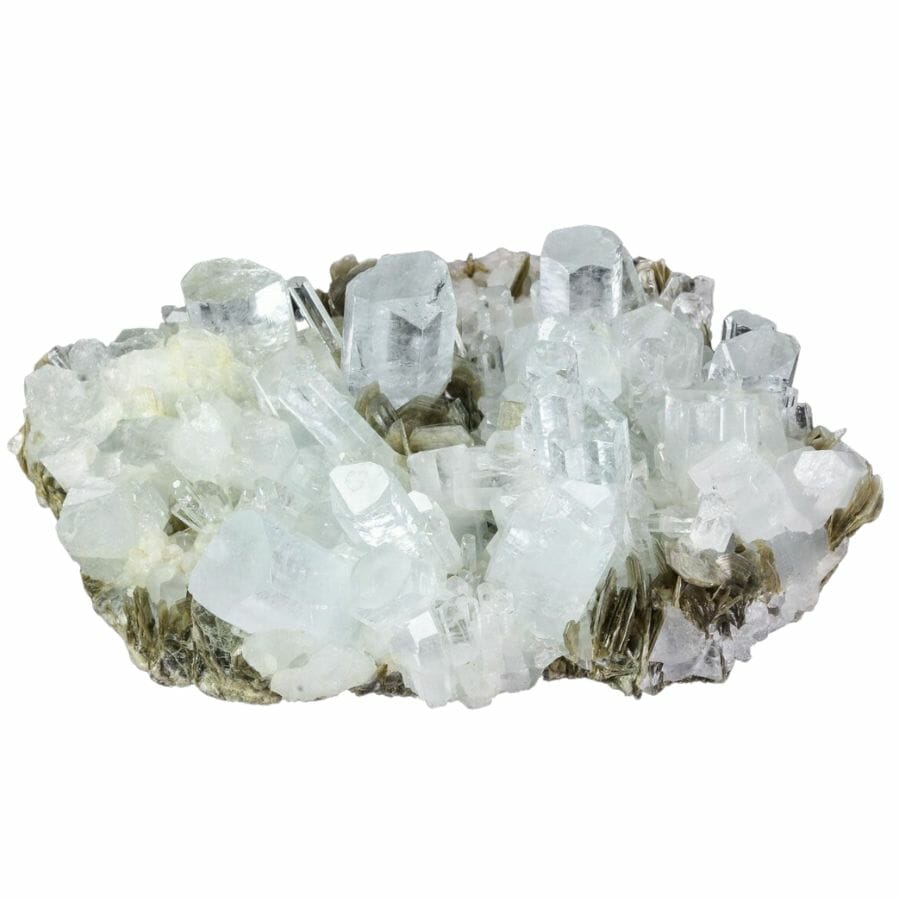
The formation of gems like aquamarine and blue topaz is kind of like cooking. Each one needs just the right ingredients, temperatures, and pressures. Even the tiniest changes in these conditions can whip up a completely different gem!
Aquamarine is a bit of a world traveler. It can be found in granite pegmatites, which are these big chunky veins of crystal that form in places where granite is cooling. It’s kind of like how rock candy forms when you cool down a solution of sugar water.
But aquamarine also shows up in other metamorphic rocks, which are rocks that have been changed by heat and pressure. If the rocks also have been mineralized by hydrothermal activity, which is like adding hot, mineral-rich water, they can create beautiful aquamarine crystals.
Blue topaz, on the other hand, prefers to hang out in igneous rocks, which are rocks formed from cooled lava or magma.
The most common buddies of blue topaz are granites and rhyolites, which are types of igneous rocks. They form in these same pegmatites as aquamarine.
If you’re interested in finding unique minerals and fossils, try searching for sites for rockhounding near you, it’s a fun way to explore and learn about your local geology!
Fluorescence – Blue topaz glows yellow or green under UV light
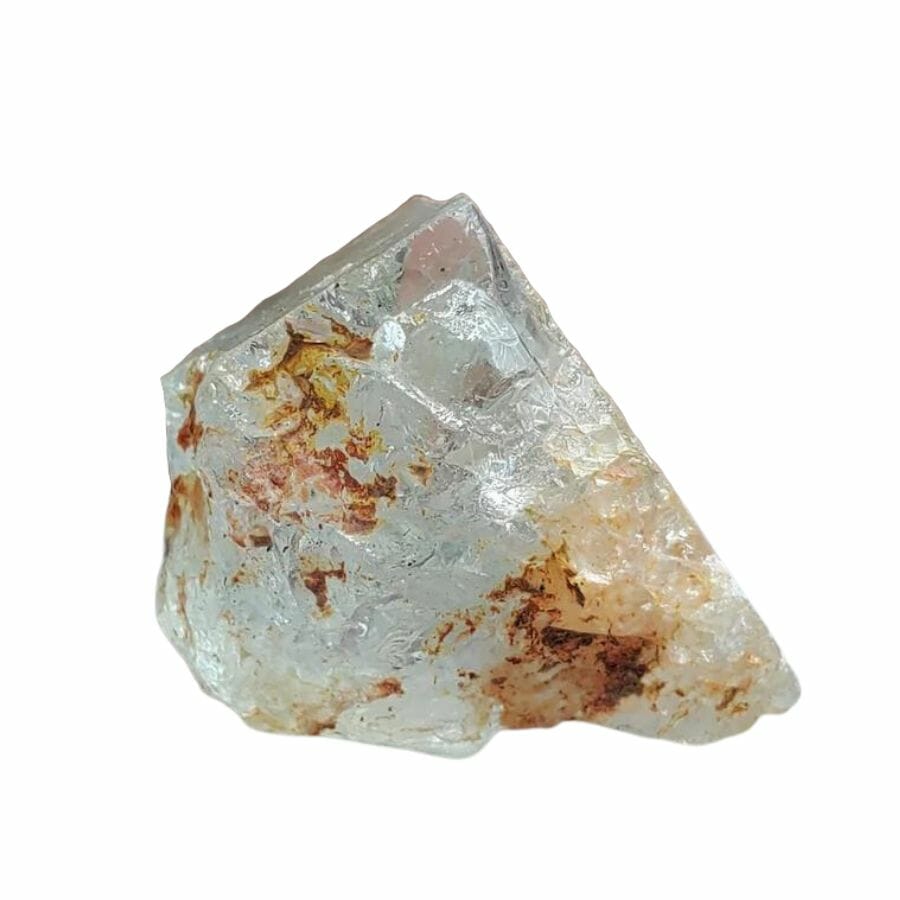
Fluorescence in gems is like a surprise light show that you can only see under special conditions. When things glow under a black light, that’s fluorescence. It happens when ultraviolet (UV) light hits the gem and then the gem gives off its own light.
Take an aquamarine gem, for example. Normally, it comes in a range of different blue hues. But if you were to shine a UV light on it, things get a little more exciting. The aquamarine would likely glow a weak pale blue color.
Blue topaz also has a fluorescent trick up its sleeve. When you shine a UV light on it, it might glow a weak yellow or greenish color.
By looking at their color under UV light, you’ll be able to tell the difference between aquamarine and blue topaz.
Price – Aquamarine is more expensive than blue topaz
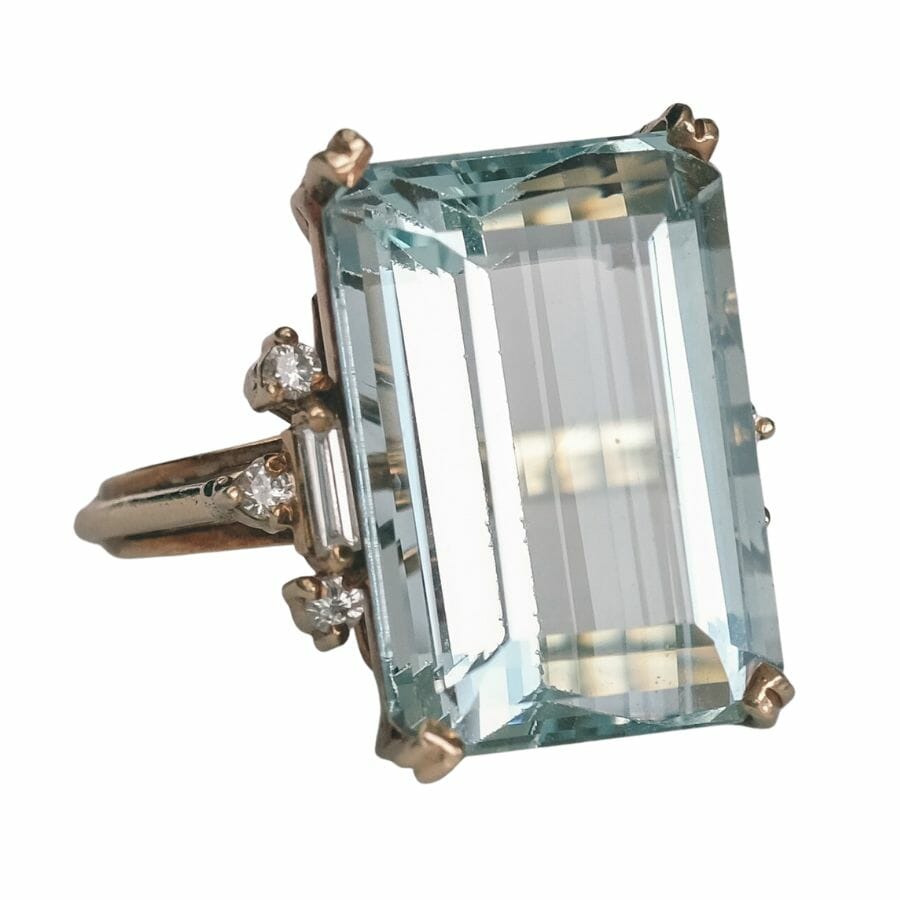
When you go shopping for gems like aquamarine and blue topaz, you might notice a difference in their price tags. It’s like comparing the cost of a rare baseball card to one that you might find in every other pack. The rarer the item, the more it usually costs.
Aquamarine typically carries a higher price tag than blue topaz. The reason behind this is pretty simple: it’s all about supply and demand. Aquamarine is rarer, so it’s harder to find.
Blue topaz, on the other hand, is a lot more common. This is especially true for the ones that are treated to bring out that deep blue color. Because they’re easier to find, they don’t usually cost as much as aquamarine.
The price of aquamarine and blue topaz can vary based on factors like color, clarity, and size. So, always do your research before making a purchase to ensure you’re getting a good deal.
Location – Blue topaz can be found in Mexico, Japan, and Russia
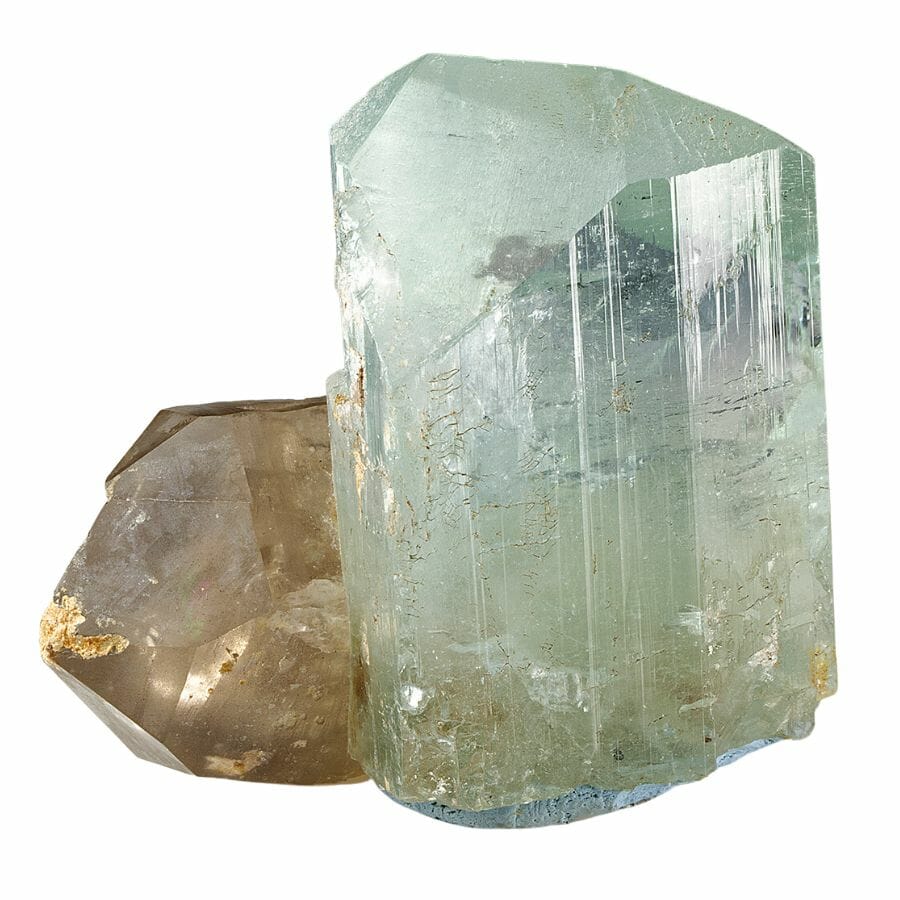
Aquamarine has a pretty impressive passport. It can be found in many different countries, from Afghanistan to Australia.
But the real superstar in the world of aquamarine is Brazil, especially the state of Minas Gerais. It’s known for producing some of the finest aquamarines out there.
Blue topaz also has a wide range of homes. Picture the icy landscapes of Russia and Norway, or the rocky mountains of Afghanistan and Pakistan.
This gemstone also loves the tropics. Sri Lanka, Brazil, and Mexico are home to blue topaz. It can also show up in Japan and on Flinders Island in Tasmania.
If you’re in any of these locations, you might stumble upon a nice aquamarine or blue topaz on one of your explorations. Mining for crystals is a great hobby where you can explore nature, learn about geology, and find beautiful gems to add to your collection.
Density – Aquamarine is less dense
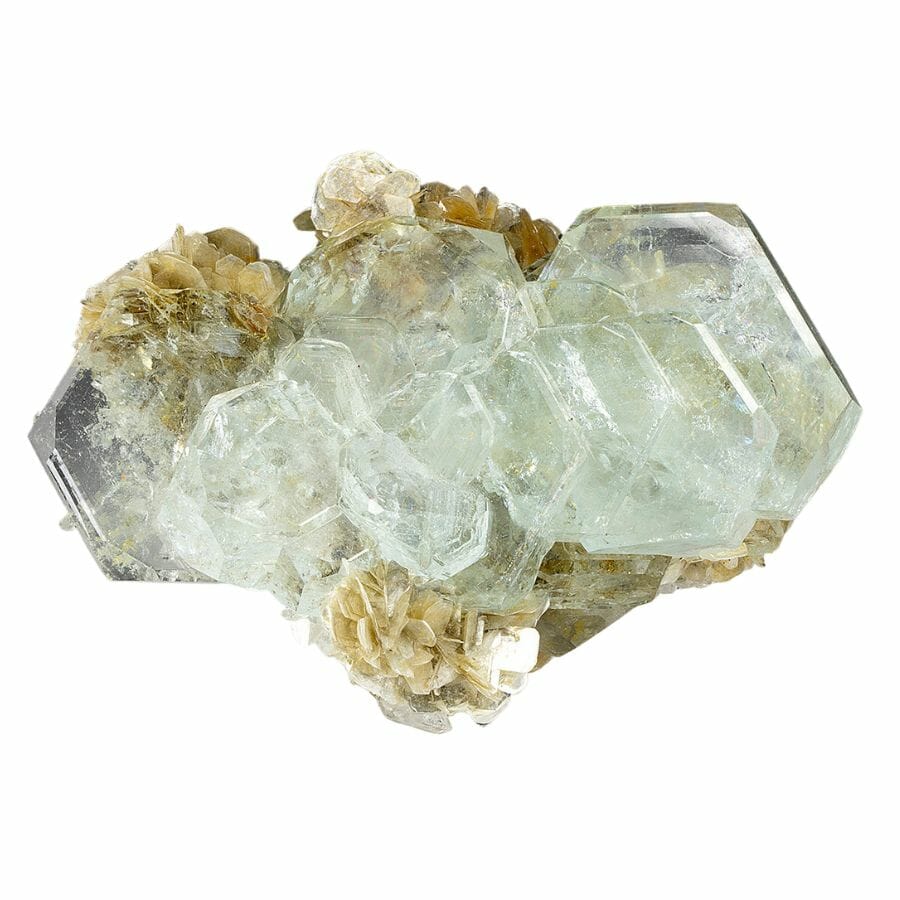
Density is a property that tells us about the stuff an object is made of. It’s a way to describe how much matter is packed into a certain amount of space.
Imagine stuffing a suitcase. A more densely packed suitcase has more stuff in it. The same goes for our gems.
Aquamarine is less dense, with a density between 2.6 and 2.8 grams per cubic centimeter. Imagine it as a suitcase packed neatly with clothes, but there’s still some space to fit in a few more things.
In contrast, blue topaz is denser. It has a density between 3.4 and 3.6 grams per cubic centimeter. Picture it as a suitcase that’s jam-packed with clothes, shoes, and maybe a souvenir or two. You can’t fit much more into it without bursting the zipper!
This difference in density means that, for the same size gem, a blue topaz feels heavier than an aquamarine. So if you had an aquamarine and a blue topaz, both the same size, the blue topaz would weigh more. That’s density at work!
Blue Topaz vs Aquamarine – The Similarities
Despite all these differences between aquamarine and blue topaz, they have more in common than you might expect.
Appearance – They are both transparent to translucent
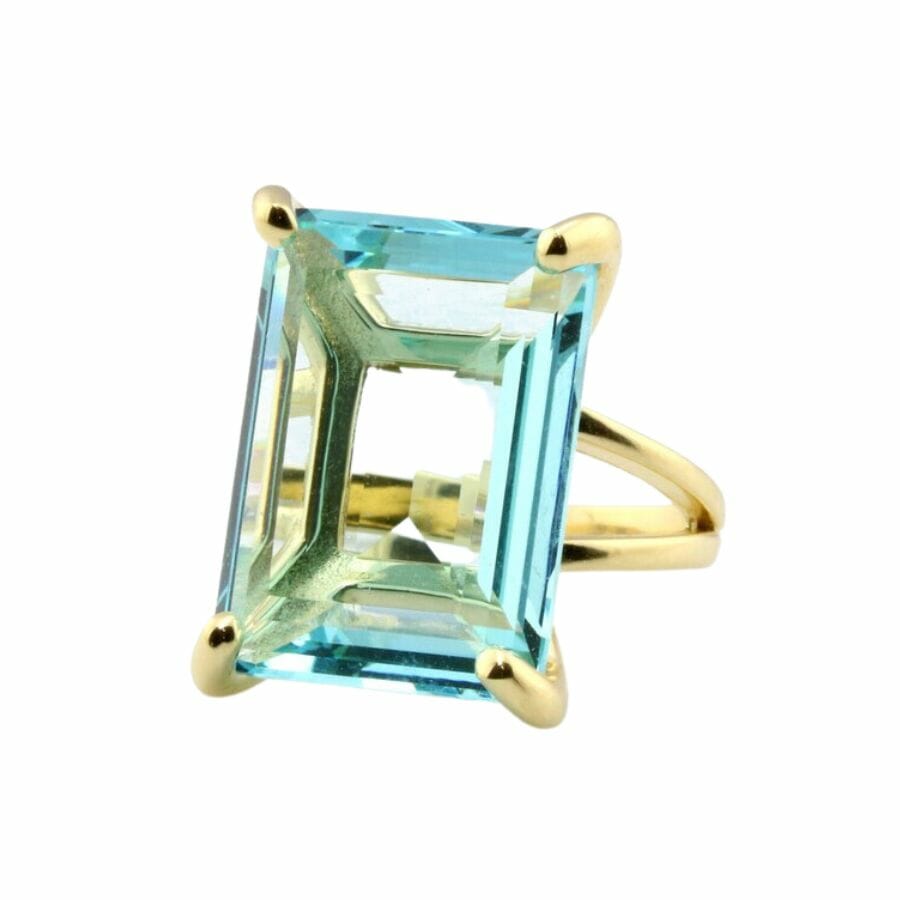
Aquamarine and blue topaz might remind you of a piece of glass. One of the reasons for this is because they’re both translucent to transparent. This just means that light can pass through them, like looking through a clean window.
When you hold aquamarine up to the light, you can see right through it, just like looking through a pane of clear glass. This is a big part of why it looks so stunning in jewelry – light can enter the gem, bounce around, and then come back out.
Blue topaz is similar. It’s also translucent to transparent. So, when you hold a piece of blue topaz up to the light, you can see right through it as well.
Clarity – They can be naturally clear or full of inclusions
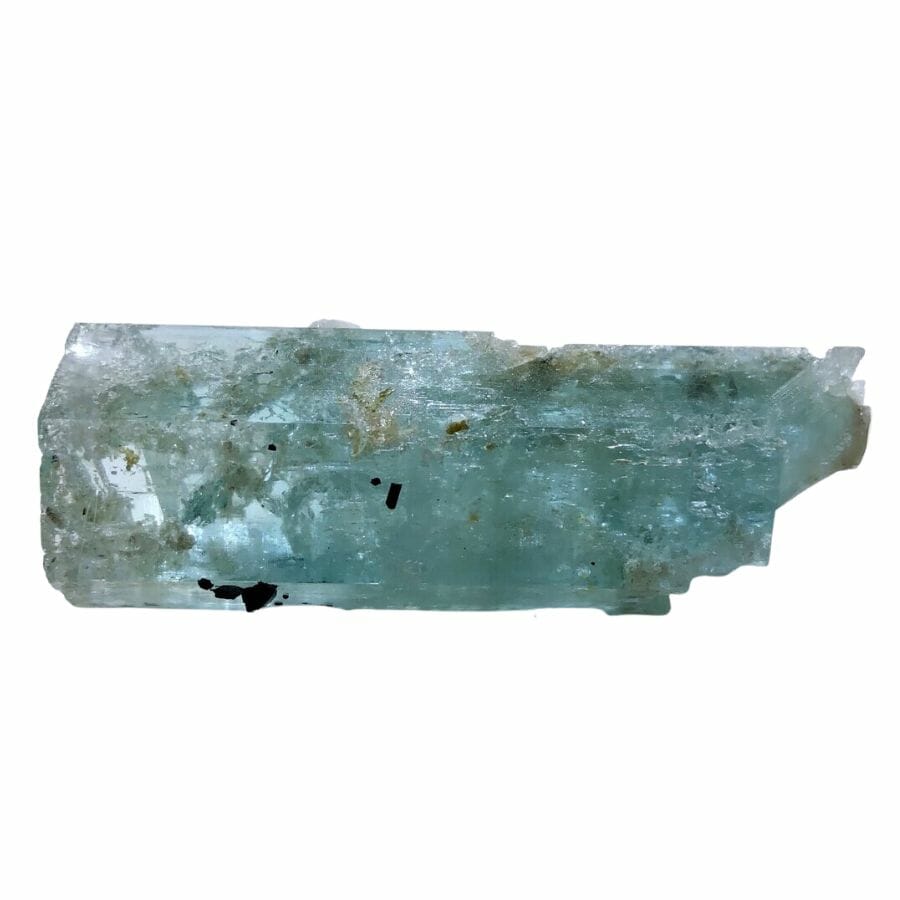
Sometimes, when you look closer at aquamarine and blue topaz, you might notice tiny features inside them. These features, called inclusions, can be a pretty cool part of a gem’s story.
Aquamarine and blue topaz can both naturally have inclusions. These could be tiny pieces of minerals or even small bubbles of liquid that got trapped inside the gem as it was forming.
Most of the time, when you see cut aquamarine or blue topaz in jewelry, they’re eye-clear. That means that when you look at the gem with your naked eye, you won’t see any inclusions.
So, while both aquamarine and blue topaz can have inclusions, you won’t usually see them in cut and polished gems for jewelry.
Streak – The two minerals leave a colorless streak
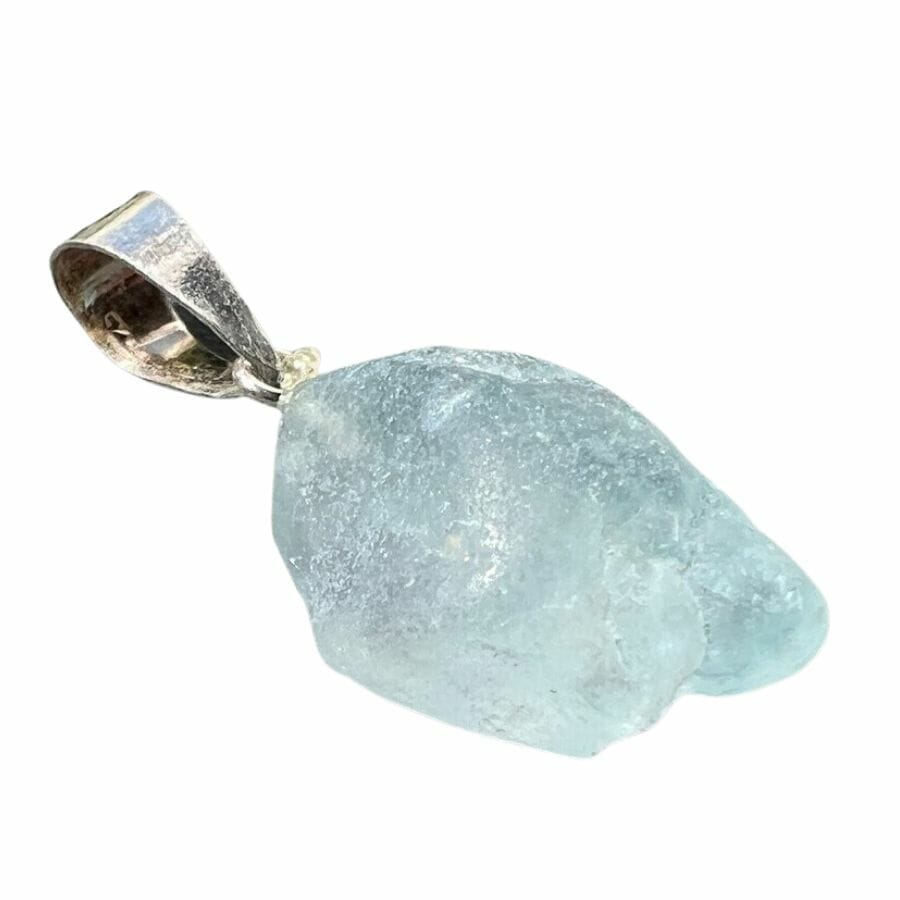
When you think about gems like aquamarine and blue topaz, you might picture their beautiful colors. But did you know that if you were to scratch them against a special plate, the color of the scratch (or “streak”) would be colorless?
This is because aquamarine and blue topaz are both harder than the streak plate. The streak plate is a piece of unglazed porcelain tile that’s used to test a mineral’s streak.
Imagine rubbing a crayon on a piece of paper. The color you see on the paper is like the streak of the mineral. But if your crayon is too hard (like aquamarine and blue topaz are harder than the streak plate), no color comes off. So, the streak appears colorless.
Luster – Both have a glass-like shine
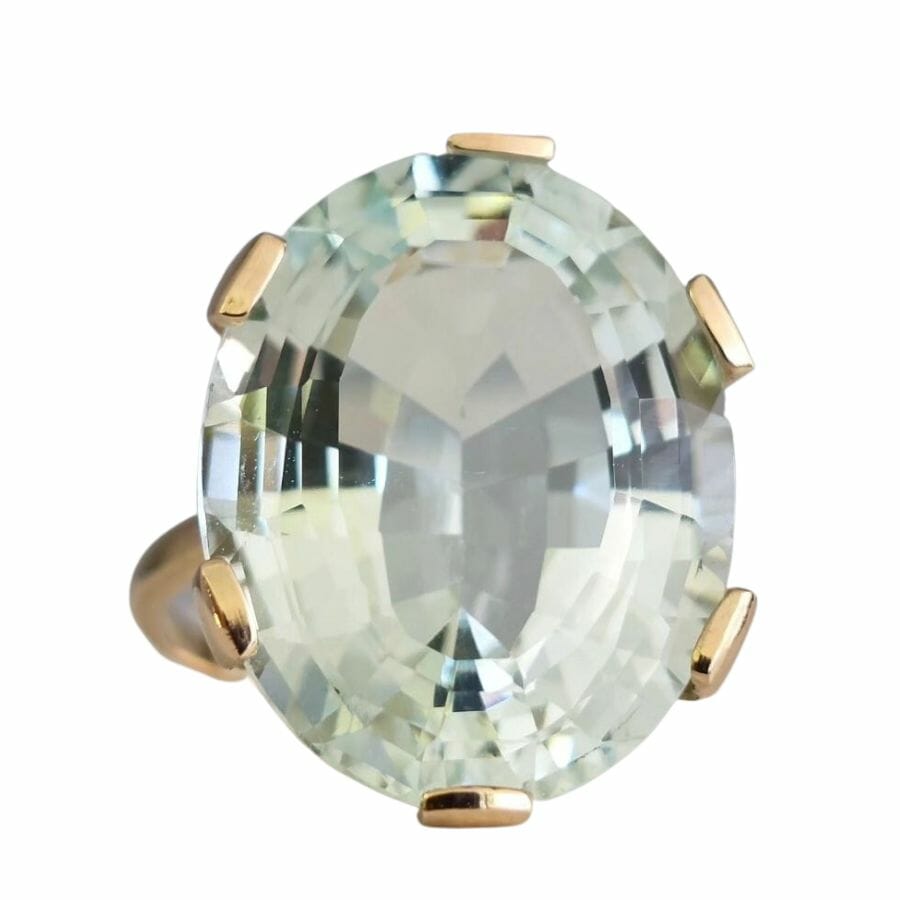
When you see aquamarine or blue topaz in a piece of jewelry, one of the first things you’ll notice is the way they shine. That’s what we call a gem’s luster.
Luster is all about how a gem interacts with light, whether it sparkles or has a softer, more satiny shine.
Both aquamarine and blue topaz have what’s known as a vitreous luster. When we say that these gems have a vitreous luster, we mean they shine just like glass.
Imagine the way light bounces off a clean window or a drinking glass. That’s the same type of shine you’d see in an aquamarine or a blue topaz.
Hardness – They both have a similar hardness
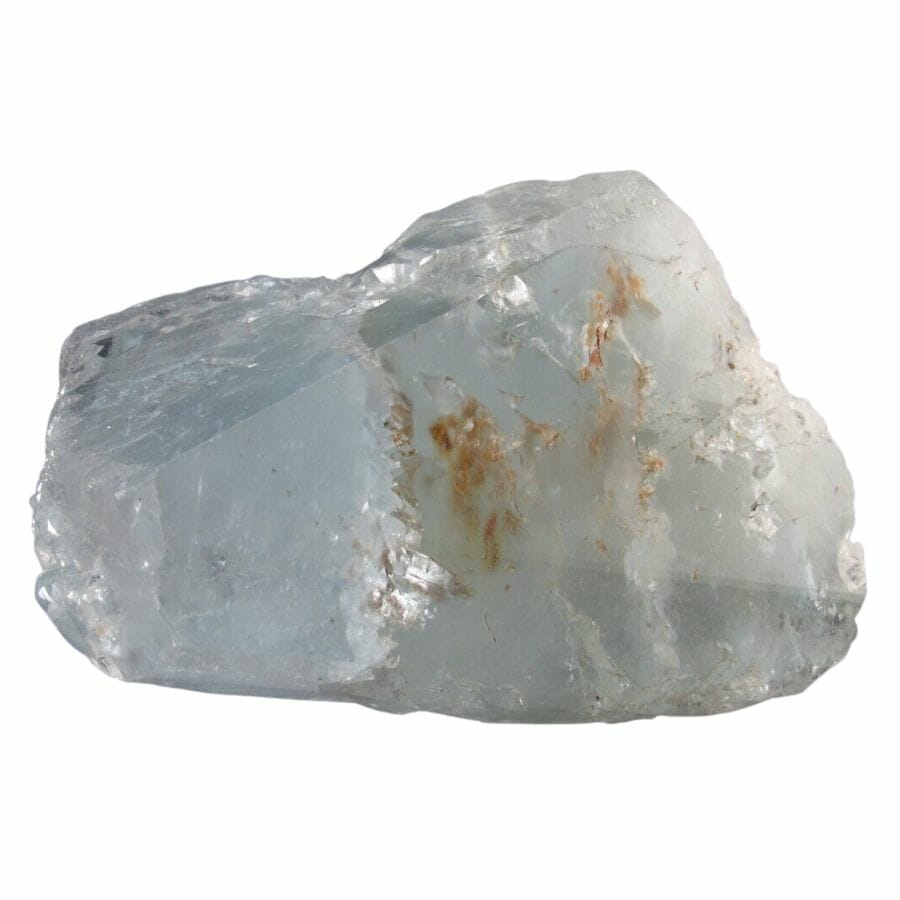
In geology, hardness refers to how well a gem can resist scratches. It’s measured using a tool called the Mohs scale.
The Mohs scale is like a ruler for minerals’ hardness. Ranked from 1 to 10, a higher number means a harder mineral. So, a diamond is a 10 because it’s the hardest, while talc is a 1 because it’s super soft.
Aquamarine is a pretty tough cookie, scoring between 7.5 and 8 on the Mohs scale. That means it’s harder than a lot of other things found in nature, and it can resist scratches pretty well.
That’s great news if you want to wear aquamarine jewelry every day!
Blue topaz is no slouch either. It also scores an 8 on the Mohs scale, making it just as tough as aquamarine. So, whether you’re wearing a blue topaz ring or necklace, you don’t have to worry too much about it getting scratched up.
Magnetism – Neither gem has magnetic properties
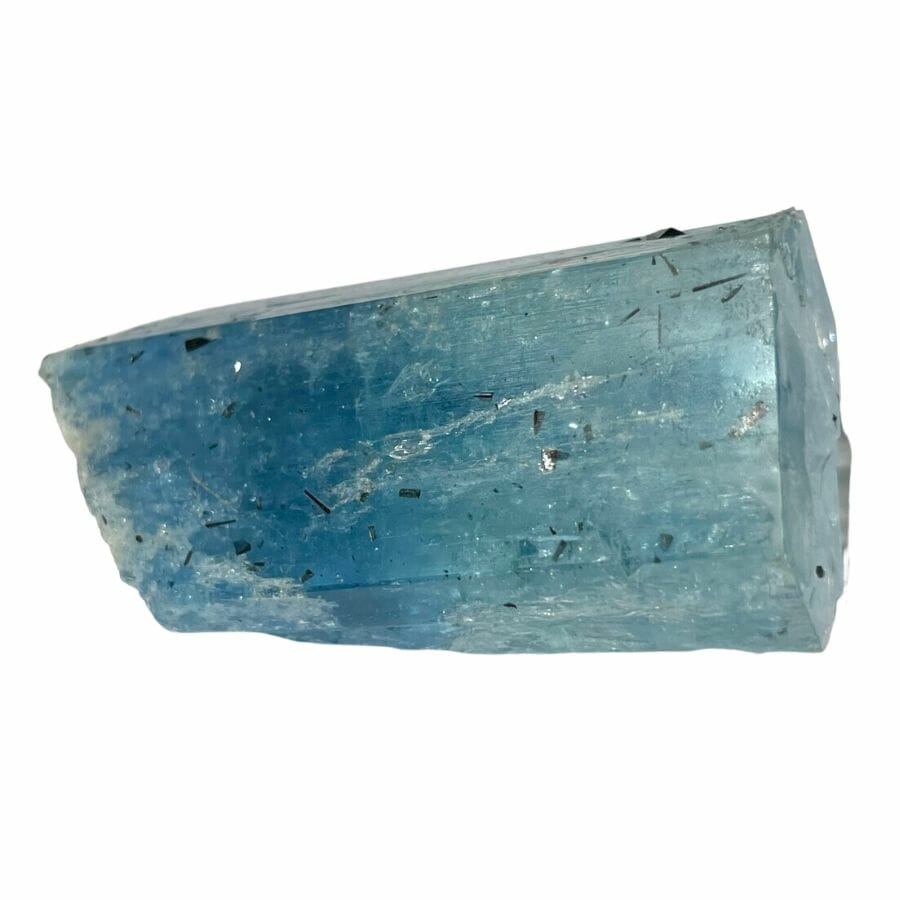
Believe it or not, neither aquamarine nor blue topaz is magnetic!
This means that these gems don’t react to magnets the way that some other things do. If you’ve ever tried sticking a fridge magnet to a coin, you’ve seen magnetism in action. But if you try sticking that same magnet to an aquamarine or a blue topaz gem, nothing would happen.
This might not seem like a big deal, but it’s actually pretty important. It helps gemologists – scientists who study gems – figure out what type of gem they’re looking at.
Conductivity – Both can’t conduct electricity
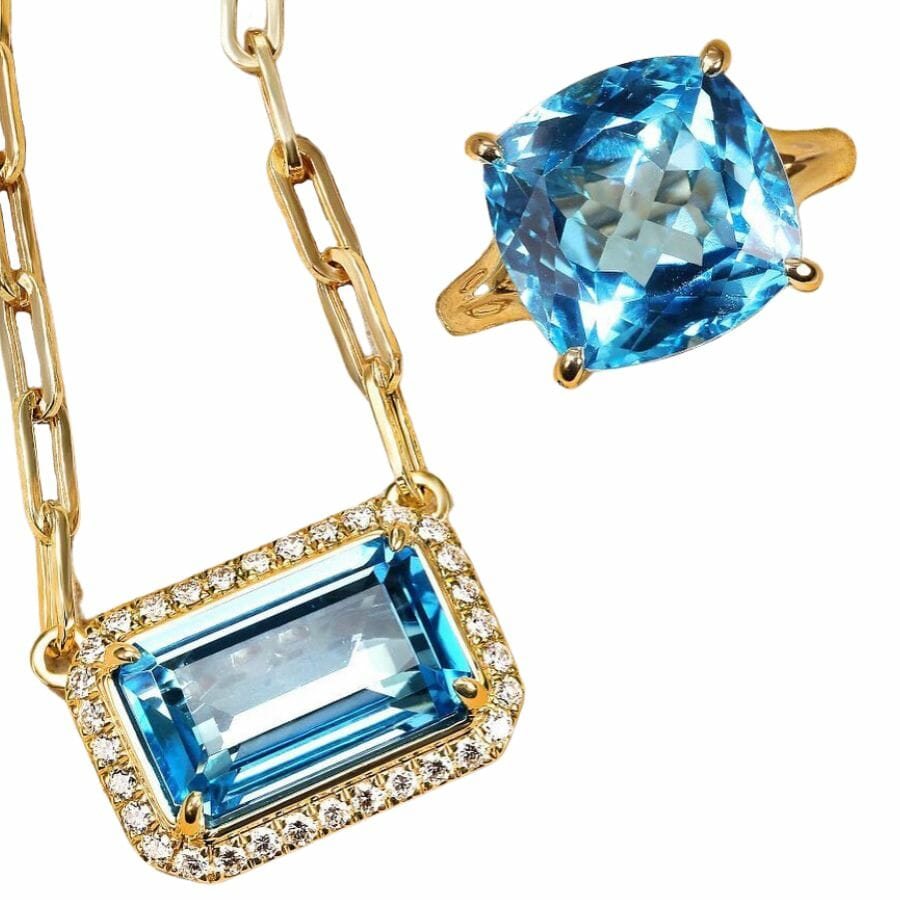
When you think of things that conduct electricity, gems like aquamarine and blue topaz probably don’t spring to mind. And you’d be right! Both of these gems are poor conductors of electricity.
Conductivity is a word that describes how well something lets electricity flow through it. Some things, like metal wires, are really good conductors. That’s why we use them in our homes and electronics.
Aquamarine and blue topaz are more like rubber or plastic when it comes to conducting electricity. If you’ve ever seen a rubber cap on the end of a power cable, that’s there because rubber is a poor conductor. It stops the electricity from getting out and shocking you.
These two gems also don’t let electricity pass through them easily, which is why you won’t see them used in electrical wiring! So, while these gems are fantastic for making jewelry sparkle, they’re not going to be much help in powering your electronics.
The Easiest Ways to Tell Aquamarine and Blue Topaz Apart
Let’s dive into two of the prettiest blue gems out there. They might seem super similar at first glance, but with a little knowledge and simple tools, you can tell blue topaz vs aquamarine.
Examine the gem under a UV light
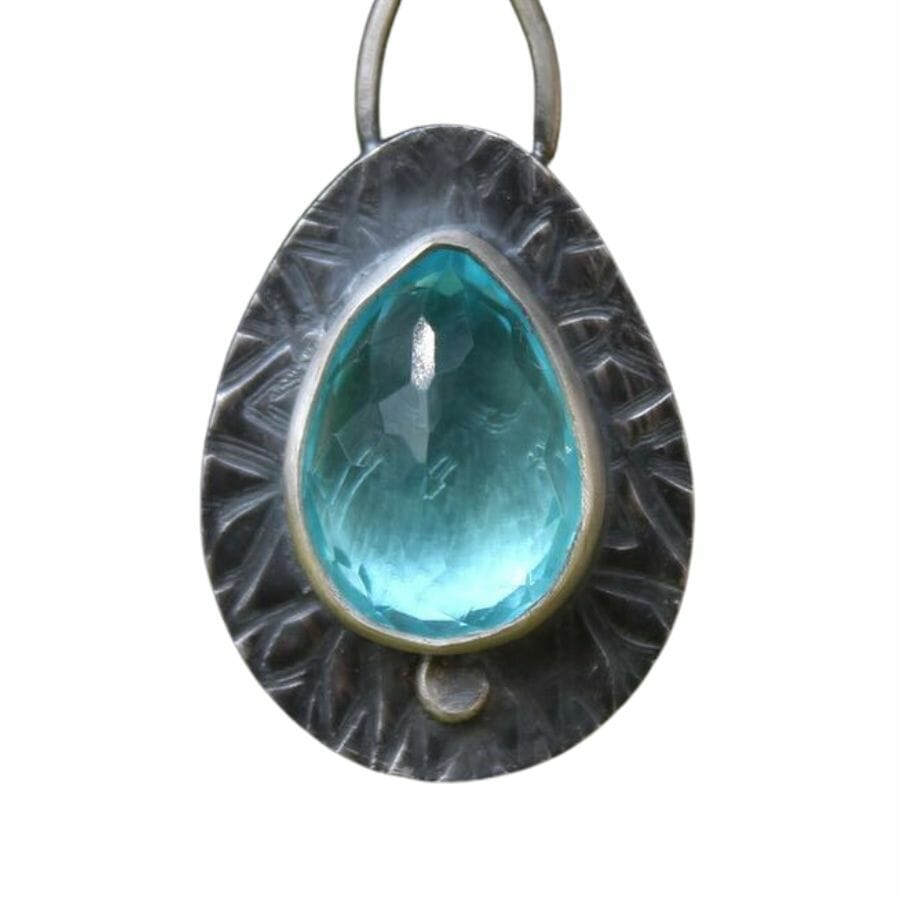
A UV light is like a secret decoder for minerals. Let’s talk about how to use it with aquamarine and blue topaz.
When you shine a UV light on these gems, they’ll react differently. Remember, this is called fluorescence, a fancy word that just means a gem glows under UV light.
Now, if you’ve got a stone and you’re not sure if it’s aquamarine or blue topaz, grab a UV light and shine it on the stone.
If the stone glows a weak, pale blue, you’re probably looking at aquamarine.
But what if it glows green or yellow? That’s a sign that it’s likely blue topaz. Blue topaz tends to glow a bit more brightly, like a little gem-powered light bulb.
Check the gem’s refractive index
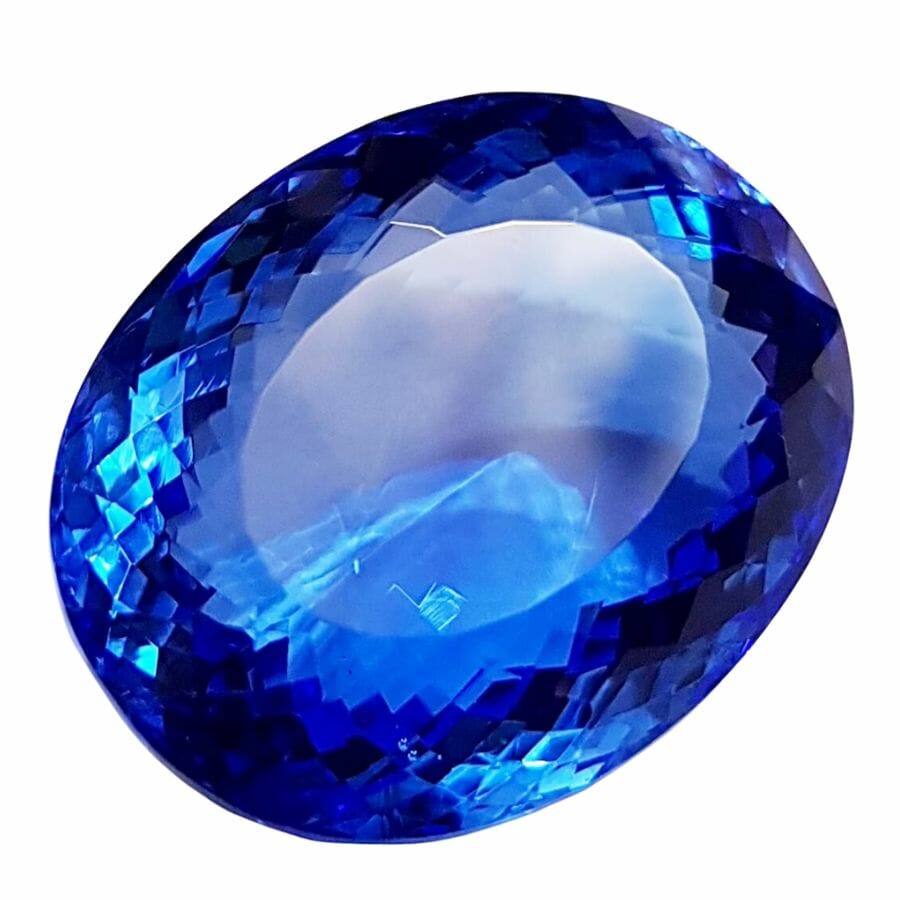
Let’s get into another cool way to tell aquamarine vs blue topaz: refraction.
Every gem bends light in a unique way. This is what we call the refractive index, and it’s like each gem’s personal signature. The refractive index is a measure of how much a gem slows down and bends light that passes through it.
We can measure a gem’s refractive index using a tool called a refractometer. This gadget lets us see the light bending and gives us a number for the refractive index. You might not have it on hand, but it’s affordable and can be ordered online.
If you’re looking to grow your gem or jewelry collection, a refractometer is a helpful thing to have.
Aquamarine has a lower refractive index, around 1.57 to 1.58. Blue topaz, on the other hand, has a slightly higher refractive index, between 1.61 and 1.64.
So, if you measure a gem’s refractive index and it’s closer to 1.57, it’s probably aquamarine. If it’s closer to 1.61, you’ve likely got a blue topaz.
Weigh gems of the same size
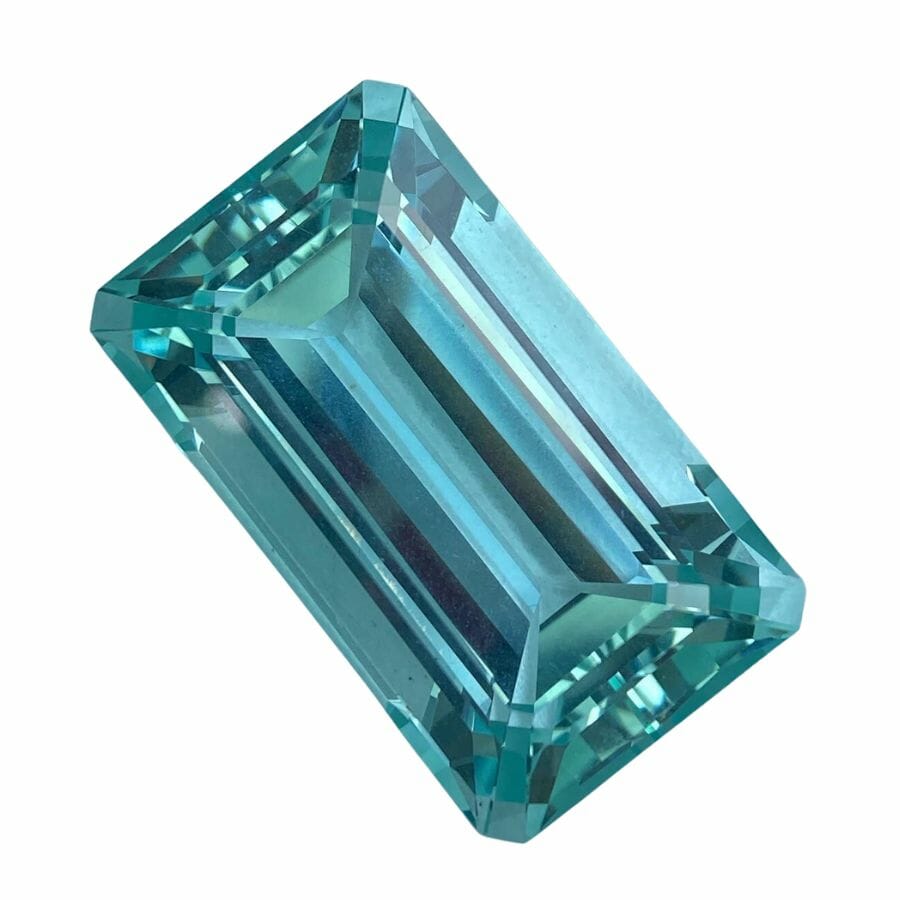
Here’s another cool trick to tell aquamarine and blue topaz apart: it’s all about their weight. If you have an aquamarine and a blue topaz that look like they’re the same size, the blue topaz will be heavier.
For this small experiment, all you’ll need is a digital kitchen weighing scale, which you might already have at home.
This has to do with the density of the stones. As we’ve discussed above, blue topaz is denser than aquamarine. So, the two gems can be the same size, but a blue topaz is heavier than an aquamarine of similar size.
So next time you’re trying to figure out if you have an aquamarine or a blue topaz, try comparing the weight. You can weigh the gemstones on a digital weighing scale so you can be sure that the measurements are accurate.

